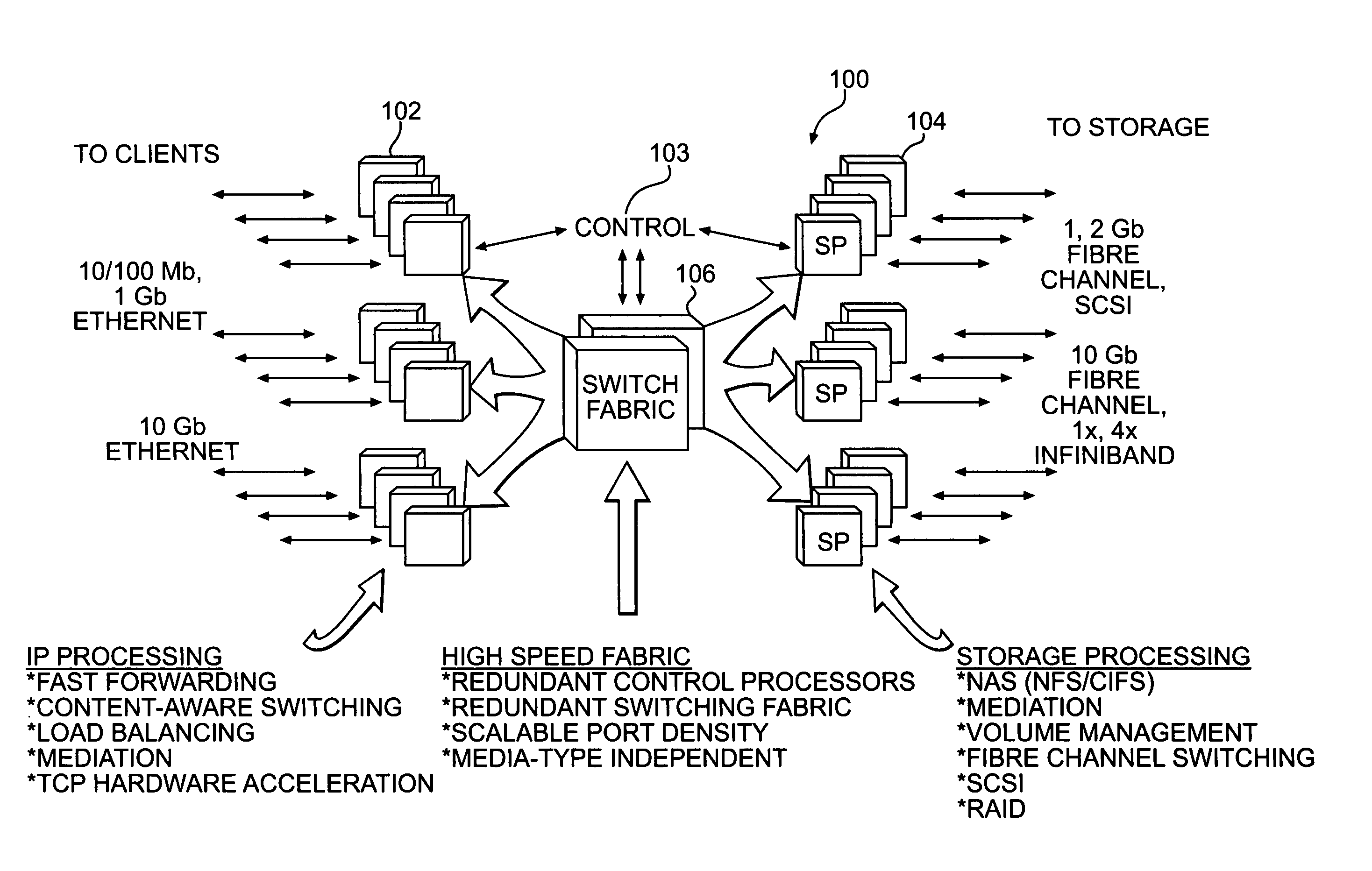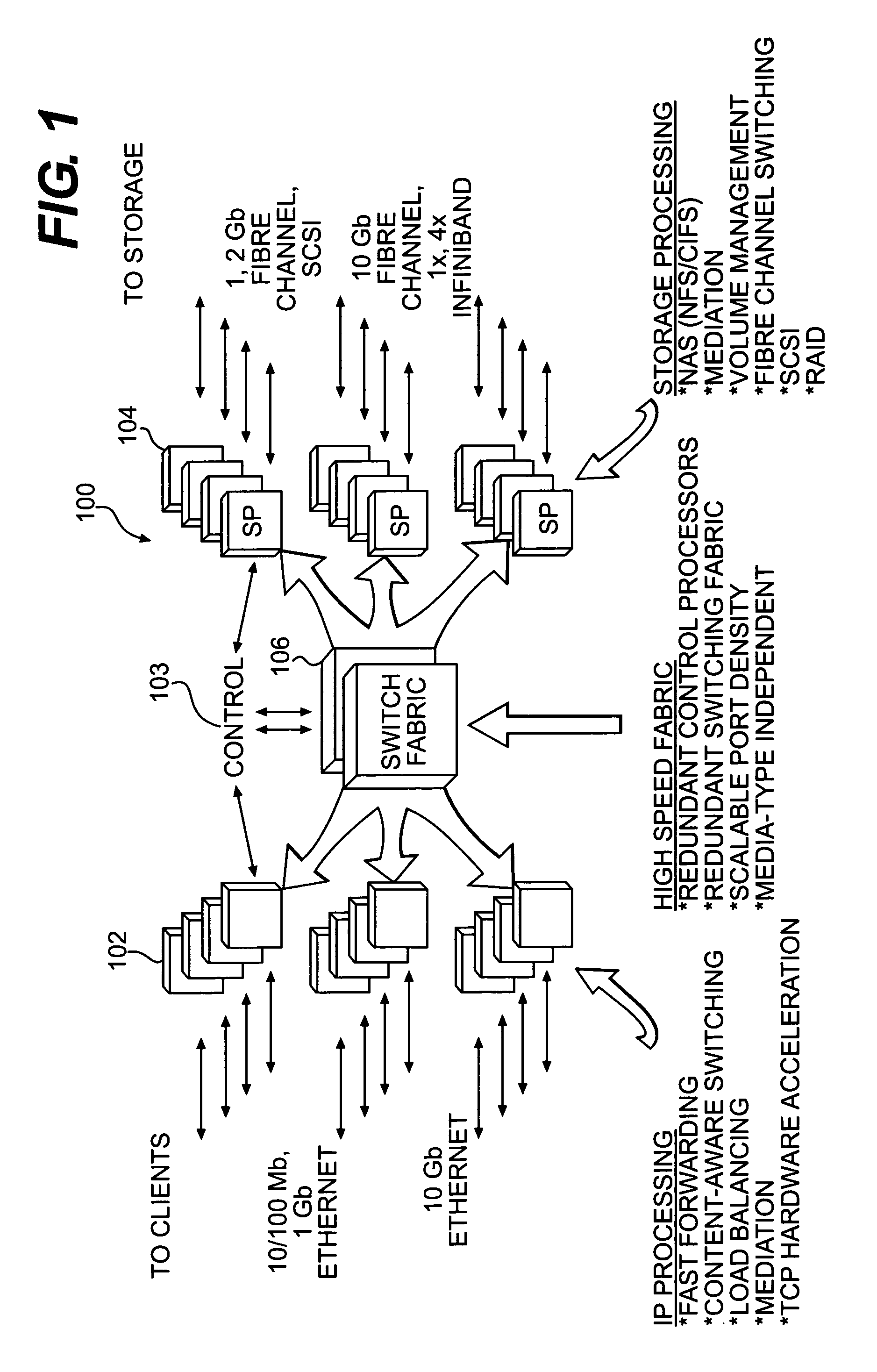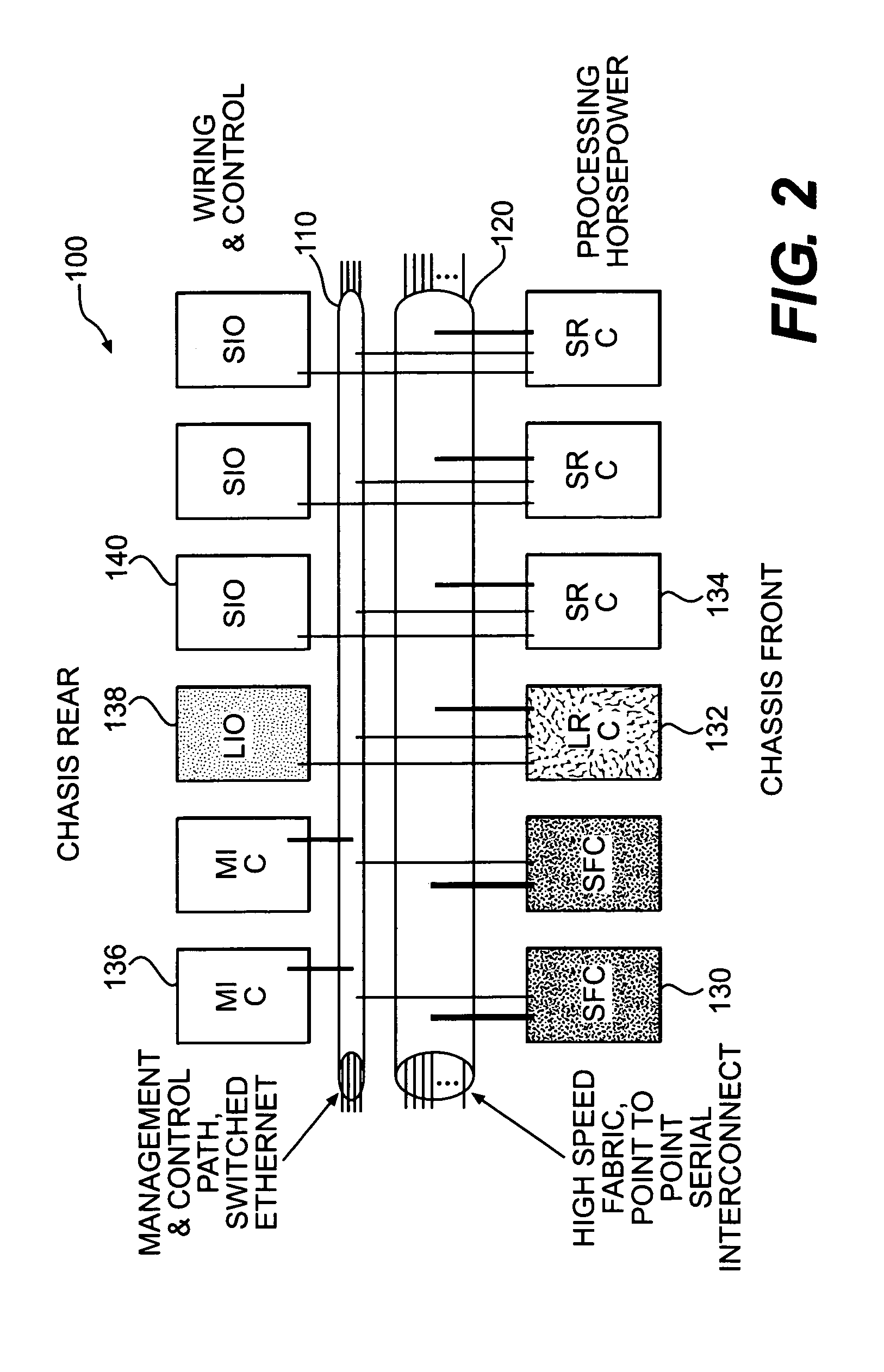Switching system method for discovering and accessing SCSI devices in response to query
a technology of switching system and scsi device, applied in the field of digital information processing, can solve the problems of not enabling seamless connection and interoperability between disparate storage platforms and protocols, not well-adapted to communicate with one another, and san devices do not integrate well with existing ip-based management systems, so as to accelerate tcp processing and improve system stability
- Summary
- Abstract
- Description
- Claims
- Application Information
AI Technical Summary
Benefits of technology
Problems solved by technology
Method used
Image
Examples
examples
Server Health:
[0574]1) Listen for VSD_CFG_T. When get one, create local VSD structure[0575]2) Listen for VSE_CFG_T. When get one, wire to local VSD.[0576]3) Listen for SERVER_CFG_T. When get one, wire to local VSE.[0577]4) Start Server Health for server.[0578]5) Listen for FILESYS_CFG_T. When get one, wire to local SERVER / VSE.[0579]6) Start Server Health read / write to file system.[0580]7) Listen for MED_SE_CFG_T. When get one, wire to local VSE.[0581]8) Start Server Health pings on IP specified in VSE referenced by MED_SE_CFG_T.
Mediation Target:[0582]1) Listen for VSE_CFG_T. When get one with type of MED, create local VSE structure.[0583]2) Listen for MED_SE_CFG_T. When get one, wire to local VSE.[0584]3) Setup mediation mapping based on information provided in VSE / MED_SE pair.
Mediation Initiator:[0585]1) Listen for LUN_MAP_CFG_T. When get one, request associated SERVER_CFG_T from MIC.[0586]2) Create local SERVER structure.[0587]3) Add information from LUN_MAP_CFG_T to LUN map for t...
examples — set 1
Examples—Set 1
[0687]1. Walkthroughs of Operations on a Current Filesystem Server Set
[0688]Create_Current_Server Set(fsid, slots / cpus)[0689]Assumptions
[0690]Assume that no NAS server is serving the filesystem; the current filesystem server set is empty.[0691]Steps[0692]NAS A boots and tells the NCM it is up.[0693]The NCM determines the new servers role in serving and that the filesystem is not being served by any NAS servers.[0694]The NCM asks server A for the checkpoint value for the filesystem and also its modified InodeList.[0695]The NCM insures that this is the most up to date copy of the filesystem. (Reconciles static configuration info on filesystem with which servers are actually running, looks in NVRAM if needed . . . )[0696]NCM activates the server set.[0697]The filesystem is now being served.
[0698]Add_Member_to_Current_Filesystem_Server_Set(fsid)[0699]Assumptions
[0700]Assume a complete copy of the filesystem is already being served.
The current filesystem server set contains...
examples — set 2
Examples—Set 2
2 UML Static Structure Diagram
FIG. 37 is a representation of the NCM, IXP and NAS server classes. For each, the top box is the name, the second box contains attributes of an instance of this class and the bottom box describes the methods each class must implement.
[0723]Attributes Description
[0724]Data local to an instance of the class that make it unique.
[0725]Methods Description
[0726]Those preceded with a + are public and usually invoked by receiving a message. The method is preceded by the name of the sender of the message surrounded by >. Calling out the sender in the description should help you to correlate the messaging scenarios described in this document to implemented methods in the classes. Those preceded by a − are private methods that may be invoked during processing of public methods. They help to organize and reuse functions performed by the class.
[0727]VII. System Mediation Manager
[0728]The following discussion sets forth the functional specification and ...
PUM
 Login to View More
Login to View More Abstract
Description
Claims
Application Information
 Login to View More
Login to View More - R&D
- Intellectual Property
- Life Sciences
- Materials
- Tech Scout
- Unparalleled Data Quality
- Higher Quality Content
- 60% Fewer Hallucinations
Browse by: Latest US Patents, China's latest patents, Technical Efficacy Thesaurus, Application Domain, Technology Topic, Popular Technical Reports.
© 2025 PatSnap. All rights reserved.Legal|Privacy policy|Modern Slavery Act Transparency Statement|Sitemap|About US| Contact US: help@patsnap.com



